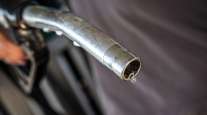Diesel Fuel Price Rises 2.4¢ to $3.923 a Gallon
This story appears in the July 25 print edition of Transport Topics.
The average price of a gallon retail diesel fuel rose 2.4 cents a gallon last week to $3.923, the second straight weekly increase, according to the Department of Energy.
Likewise, the average price of regular gasoline climbed 4.1 cents to $3.682, the third consecutive gain after seven straight declines, DOE said after its July 18 survey of fueling stations.
Neil Gamson, an economist at DOE’s Energy Information Administration, said several factors were pushing up pump prices, including China’s increased demand for distillates and the continuing conflict in oil-rich Libya.
And domestically “we also have some refinery issues in the Midwest and the East, so prices for diesel and gas have been rising faster there than other regions,” Gamson said.
Diesel has risen 7.3 cents over the past two weeks, leaving it 35.3% higher than the $2.899 average of a year ago, DOE said. During June, commercial trucking’s main fuel slid 6 cents a gallon.
Gasoline is now 96 cents a gallon higher than its average of $2.722 in the corresponding week in 2010. Gasoline prices had fallen 39.1 cents from May 9 to June 27 but since then have increased nearly 11 cents.
Facing higher fuel costs, many motor carriers have revamped their fuel buying plans.
“We do a lot fuel optimizing with our routes, and for our road buying, we have a person who deals with Pilot, Love and Flying J to get discounts,” said Mike Stromberg, manager of operations for Skinner Transfer Corp. in Reedsburg, Wis.
Skinner Transfer has 856 tractors and hauls general commodities, hazardous materials and refrigerated products.
Stromberg said Skinner closely monitors the volume of its 12,000-gallon company fuel tank. Skinner orders bulk fuel when it believes it can save the most.
“When we can, we’ll squeeze a load in when the price is good,” Stromberg said.
In its earnings report, Heartland Express Inc. said fuel expenses soared $11.3 million to $42.3 million during the second quarter from a year earlier. The North Liberty, Iowa, truckload carrier said the year-to-year average cost of fuel during the period jumped to $4.007. To combat the rise, Heartland said in the statement that it continues to focus on fuel-surcharge pricing and reducing truck idling hours.
Truckload carrier D.M. Bowman Inc., Williamsport, Md., told Transport Topics that it relies on similar in-house approaches.
“We attempt to limit idling, and overspeeding is a no-no,” said Bill Campeau, the company’s chief financial officer. Sensors register engine revolutions per minute, and any time a truck exceeds 70 mph, the company gets a notice from Qualcomm., its wireless data provider.
He said D.M. Bowman prefers to do terminal fueling and closely monitors its miles-per-gallon reports.
“We look at any abnormalities,” Campeau said. “If we have a truck that’s performing well with high mpg and suddenly the mpg drops with a different driver, then we do some coaching.”
D.M. Bowman averages what Campeau calls a fairly modest 5.5 mpg.
“Anything above that range is good,” he said.
The rate would fluctuate with the season because truckers have to run air conditioners in summer and heaters during the winter. But he calculated if a carrier is getting 6 miles to the gallon and spending just under $4 a gallon, the cost is 66.3 cents a mile. If efficiency falls to 5.7 miles per gallon, the cost is 66.7 cents, or four-tenths of a cent higher.
On July 21, the price of crude oil briefly climbed over $100 a barrel on the New York Mercantile Exchange for the first time since early June, news services reported. It dropped back to close at $99.13, about $6 higher than it was just three weeks earlier and $21 higher than a year ago.
Crude began its push back over $100 after DOE said July 20 that domestic inventories had fallen 3.73 million barrels in the week ended July 15 to 351.7 million barrels. Analysts attributed additional gains the following day to progress on a financial bailout of Greece, as well as several U.S. economic reports that were not as bad as originally feared, news services reported.
DOE also reported last week that distillate fuel inventories increased by 3.4 million barrels last week and are in the upper limit of the average range for this time of year.
Diesel and heating oil derive from distillate, and stocks tend to build up in this part of the year because no one is using heating oil in this hemisphere, EIA’s Gamson said.




